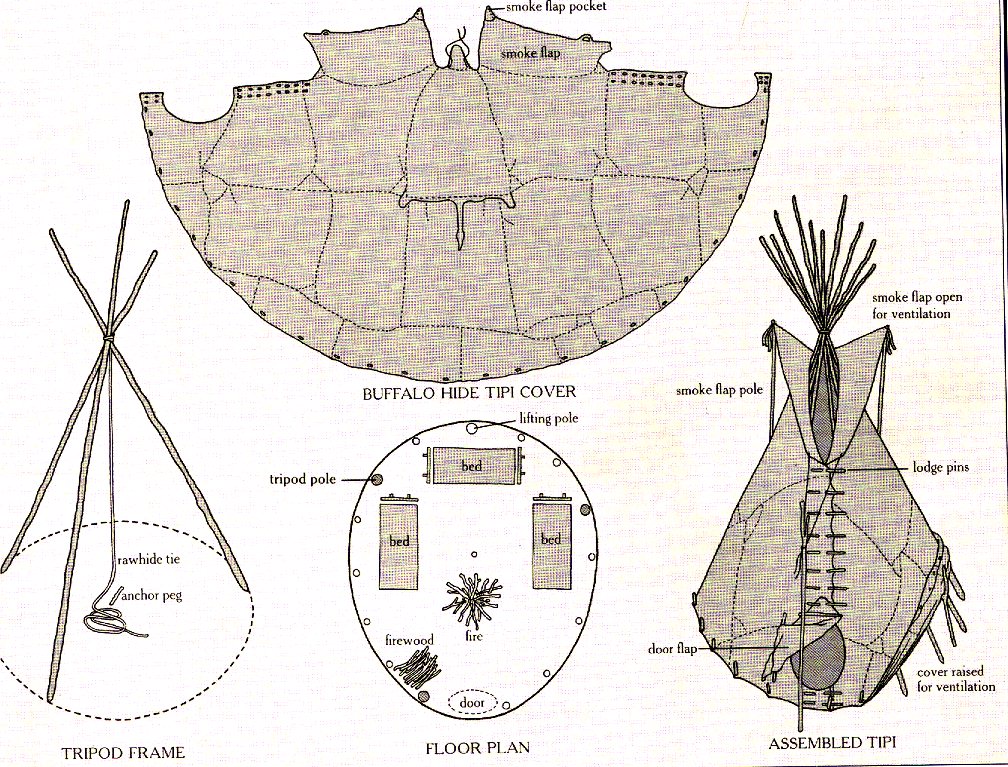
The Tipi
The Plains Indians' solution to such fundamental needs as food, shelter and social order reveal them as a people of resourcefulness and ingenuity. The tipi was perfectly fitted to the housing requirements of the roving buffalo hunters. This buffalo skin tent was portable, easily erected, waterproof and ,owing to a clever wind deflecting device of smoke flaps, well ventilated even with a fire burning inside.
Although the tipi has come to be a symbol of Plains Indian life, many tribes spent a great deal of the year, when they were not on the move, in permanent structures of earth or grass. But none of the Plains Indians dwellings could match those of the Pueblos (their southwestern neighbors).
The tipi was warm in the winter, cool in the summer, and sturdy enough to withstand gale-force winds. It was truly a remarkably serviceable dwelling - and yet it was so easy to assemble that two women could erect it within an hour.
Although certain details of design differed from tribe to tribe, the tipi was basically a cover made of dressed buffalo hides that were stitched together with sinew and stretched over a framework of poles. Most tribes used a tripod of especially strong poles for the main support. These primary supports were tied together at the top and raised; then all but one of the remaining poles were leaned against them, tied in place and, in windy weather, anchored to a single peg in the ground within the tipi. The frame was not a true cone, but was tilted slightly. This asymmetry served several functions. It provided more headroom in the rear of the dwelling; it permitted better ventilation with an off center smoke hole; and, since tipi's almost always faced east, the greater slant of the front side helped brace the structure against the prevailing west winds on the back. Usually about 15 feet in diameter at the base, it had ample room for beds, back rests, a stack of firewood and other articles of equipment, sometimes arranged according to the way the floor plan was set up.
Tipi Etiquette
Proper behavior was always the rule when one visited another's tipi. If the door was open, a friend could enter the tipi directly. But, if it was closed, he should announce his presence and await for the owner to invite him to come in.
When a male visitor entered a tipi, he went to the right and waited for the host to invite him to sit in the guest place to the left of the owner, at the rear. A woman entered after the man and went to the left.
When invited to a feast, guest were expected to bring their own bowls and spoons and eat all they were given. No visitor should ever walk between the fire and another person, but instead should pass behind the sitter, who for the most part, would lean forward to make room.
Women never sat cross-legged like men. They could sit on their heels, or with their legs to one side.
In a group of men, only the older ones could initiate conversation. The younger men were supposed to politely remain silent unless they were invited to speak by an elder. When the host cleaned his pipe, that was the sign for everyone to leave.
Below is a typical layout of a tipi and with a floor plan included.

